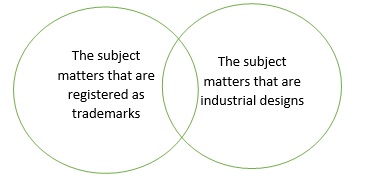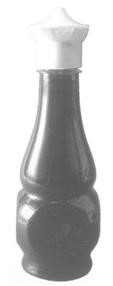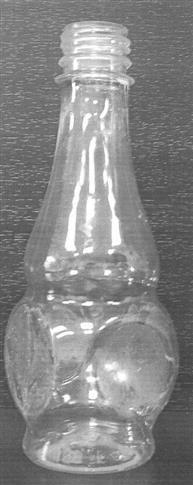Services


Trademark Search
and Clearance
Search Onlineand Clearance

Leading IP Firm
Our ratings
One of the conditions for the successful promotion of the products is distinguishing them with the help of a memorable packaging or a label. At the same time, it is important for the manufacturer to secure the right to the use of the original subject matter, what will allow preventing the unlawful actions of the unscrupulous competitors, as well as defending the violated rights.
If to consider the state registration of the actual appearance of the article, its shape or packaging, then there are several ways of the legal protection of the subject matter. Namely: to register a trademark or an industrial design. So, Article 1482 of the Civil Code of the Russian Federation states that word, figurative and combined, as well as three-dimensional or other designations shall be protected as trademarks. Among other things, according to the explanatory provisions of the Guide for the State Registration of Trademarks, it is allowed to register the product appearance (for example, an original bottle, a product design, etc.). As to the industrial designs, in accordance with Paragraph 1 of Article 1352 of the Civil Code of the Russian Federation, these are the solutions of an article appearance or an artisan industry manufacture. On the basis of this legal norm, it becomes obvious that, provided the compliance with the patentability criteria, the protection of the package or the product appearance as an industrial design is permissible.
Thus, the following question arises before the owner of the result of intellectual activity: “In what form is it better to register the created packaging or design?” In the cases, when the alternative or simultaneous registration of the subject matter is possible in several fields of intellectual rights, a term “crossing of defense” is used. It means that subject to the appropriate registration of the rights of the holder, the comprehensive (crossing) legal protection is being in force, which guarantees the enhanced defense of the subject matter used, for example, in accordance with the norms regarding industrial property and trademarks. It is important to note that, for the legal action “crossing of defense,” the right holder most often must commit a number of actions. For example, the registration of the subject matter of intellectual property and obtaining subsequently the protection documents issued by the competent public authority.
The “crossing of defense” in the subject matters of the rights to trademarks and industrial designs can be visualized as follows.

The image clearly shows that the “crossing of defense” is possible only with respect to a specific group of the subject matters, the protection of which is possible both as trademarks and as industrial designs. At the same time, the right holder may register the result of intellectual activity in the same field, but then the “crossing of defense” will not be in force, and there is a possibility of a collision with the rights of another legal subject.
Subject to the compliance with the necessary requirements, before deciding in what form to register the result of intellectual activity, it is worth considering the advantages of each option.
The main advantages for the trademark registration come down to the following:
The registration of the subject matter as an industrial design has a number of advantages:
The advantages of the comprehensive registration of the subject matter are as follows:
A striking example of the adverse consequences of the registration of the subject matter in the same field of intellectual property was the opposition of the companies “Masan Rus Trading” and “Virosko-N.”[1] On August 27, 2003, “Torgovyi Dom “Virosko,” whose successor the organization “Virosko-N” became, filed an application for the registration of a three-dimensional trademark in the form of a plastic bottle of an original form, for the use in the 29th and 30th classes of the ICGS (tomato paste, mustard, condiments, including sauces, ketchup, and vinegar). Subsequently, Rospatent granted protection certificate No. 264741.

Trademark No. 264741
On August 28, 2003, the company “Masan Rus Trading” filed an application for the registration of a utility model in the form of the shutter for a vessel, and then, on September 1, sent an application for granting protection to the industrial design, which was a plastic bottle of an original form. As a result, two patents were obtained: No. 34505 and No. 56267.

Utility model No. 34505 “The Shutter for a Vessel”

Industrial design No. 56267
Thus, the companies officially obtained the rights to the use of the visually identical subject matters, while it is worth adding that both organizations manufactured and packaged a homogeneous product (sauce) in them. “Virosko-N” appealed to the court with a claim to stop the violation of the rights to the trademark and to prohibit all actions related to the use of the disputed subject matter. The first-instance court satisfied the claim. However, the Court of Appeal cancelled the decision and justified the position as follows: both companies owned the registered subject matters of intellectual property. The purpose of these subject matters did not coincide, as the trademark was used to distinguish the products, and the industrial design was a new technical and artistic and design solution of the product, which in that case was used to pack the product. The parties to the conflict used the disputed subject matter for the various purposes; therefore there was no violation of the plaintiff’s rights. The court of cassation supported those conclusions and clarified that “Masan Rus Trading” used lawfully the registered results of intellectual activity belonging to it. “Therefore, in the case if the use of an invention, an industrial design or a utility model can not be carried out without violating the exclusive rights of another owner, the latter may apply to the Federal Executive Authority on Intellectual Property with a statement on an early termination of the patent for the invention, the utility model or the industrial design.”[2] The described position of the representatives of the court allows concluding that in the event of the “crossing of protection” with the owner of another subject matter; first of all it is necessary to contact Rospatent with a statement on challenging the legal protection granted.
The current legislation contains the norms that do not allow the simultaneous registration of the subject matters with the “crossing of protection” with respect to different applicants. Thus, according to Subparagraph 3 of Paragraph 9 of Article 1483 of the Civil Code of the Russian Federation, “The designations shall not be registered as the trademarks, if they are identical to: ... the industrial design, the correspondence mark, the rights to which have arisen earlier than the priority date of the trademark being registered.” Regarding the industrial designs, the legislator also indicates that the registration of the subject matters that are identical to the ones that have already been registered shall not be granted (Paragraph 5 of Article 1352 of the Civil Code of the Russian Federation). However, even taking into account the existing provisions, the collision of the rights is not excluded; due to this fact, obtaining the comprehensive legal protection in relation to the subject matter being used seems justified.
The civil law ways of defending the rights to a trademark and an industrial design
Speaking about the differences and advantages of defending the subject matters as the trademarks and the industrial designs, it is worth noting that in the legal terminology such concepts as the “protection of rights” and the “defense of rights” are distinguished. The first concept is broader in the meaning and it covers all relationships from the moment the particular right has arisen and till to the moment of its termination, while the definition the “defense of rights” is used, when the rights and legitimate interests of the legal subject are violated.
According to the general provisions of Part 4 of the Civil Code of the Russian Federation the right holder of any subject matter of intellectual property is entitled to the defense of the exclusive rights by asserting the claims:
The legislator identifies the additional ways to defend the rights to a trademark. According to Article 1515 of the Civil Code of the Russian Federation, in the case of the illegal use, the right holder may appeal to the court and claim:
The norms of Article 1406.1 of the Civil Code of the Russian Federation contain a list of alternative sanctions for the illegal use of industrial designs. The patent holder is entitled to claim: “... instead of the reimbursement of the losses – the payment of compensation:
What is better to register: an industrial design or a trademark?
Subject to the compliance with the requirements for the registration, the right holder chooses independently in what form to register the result of intellectual activity. To make a final decision, it is worth taking into account the cost of the procedure, maintaining the protection document in force and the expediency of one or another kind of protecting depending on the intended way of the use. The analysis of the norms in the field of the trademarks and the industrial designs shows that the main differences come down to the terms and the procedure for the validity of the certificate or the patent and the level of the requirements to the registration subject matter. The stipulated civil law ways of the defense are almost identical. At the same time, it is not prohibited by the law to register the same intellectual property subject matter in several fields with respect to the same right holder. It seems logical and correct to obtain the comprehensive legal protection in the form of the registration of the subject matter as a trademark and an industrial design.